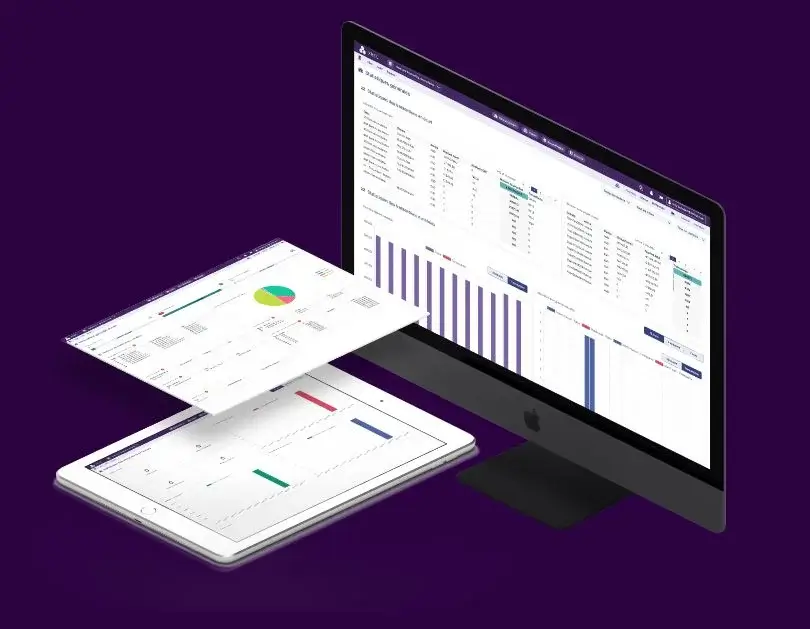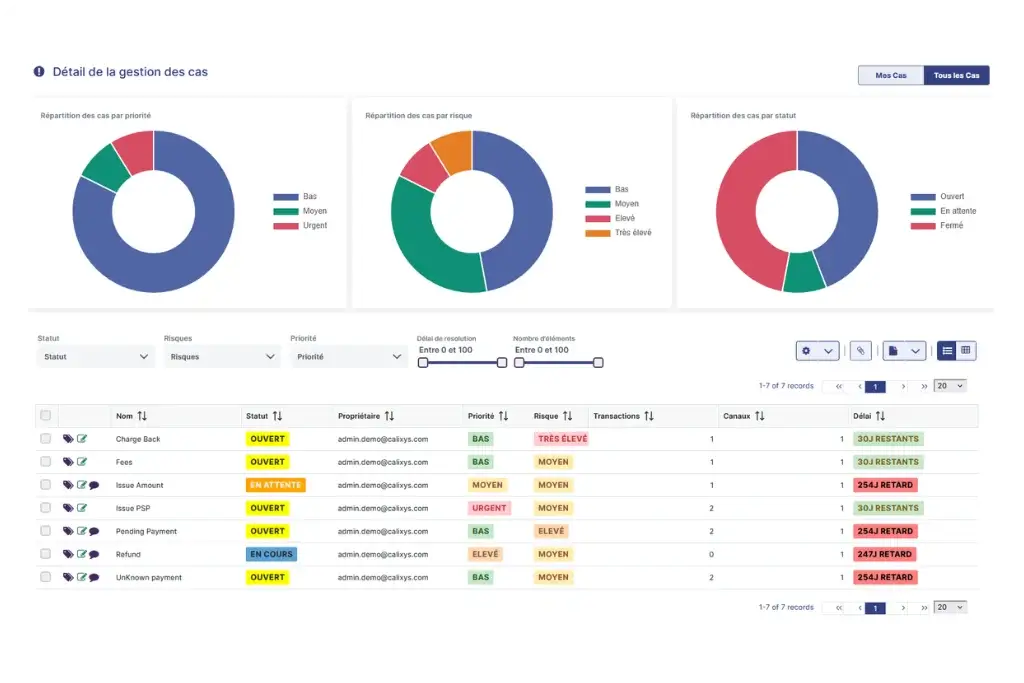XREC 6.0: manage your discrepancies & simplify your financial reporting

Publié
Le 03/07/2024, par :
- Anne Marie Diom
Sections
Contexte
The Calixys team is proud to announce the launch of a brand-new version of its SaaS platform dedicated to reconciliation: XREC!
XREC already reconciles over 400 million transactions a month for its users, making all their record-to-report (R2R) operations easier. Thanks to a powerful algorithm, the collection, sorting, reconciliation, and analysis of financial data is automated and accelerated to help finance departments improve efficiency, accuracy, and productivity.
The Calixys team has listened carefully to its customers’ needs and is now launching an updated version of XREC. So, what are XREC’s new features? Who are they for and what benefits do they bring? Through the eyes of 3 different Calixys team members, this article will look at the contributions and changes of the latest version and the role of XREC in the transformation of financial back offices.
Synthetics dashboard, for enhanced ergonomics
What is XREC software used for ?
XREC automates all types of reconciliation (financial and non-financial) and helps finance departments to:
- Improve accuracy and transparency by making data more reliable
- Comply with regulations and facilitate control operations
- Automate and accelerate reconciliation operations
- Centralise financial data
- Increase collaboration within and between departments
What is changed in this new version ?
Several changes have been made in this updated version, including
- An improved user experience and platform ergonomics, with a new UX/UI design
- A new Break Management feature to automate the classification of accounting discrepancies
- A redesign of the automated dashboards and the possible configurations for summaries and reports
According to Jelena Velimirovic, Product Owner, the aim behind this recent version is “to help CFOs secure the heart of their financial system. With a reconciliation tool dedicated to control, they can see things more clearly and base their decision-making on reliable data“. To implement this desire for visibility and control with XREC, the dashboards have been completely overhauled.
The automated dashboards are visible right from the solution’s home page. They can also be configured and customised according to the login profile. So, whether you are a business profile (accountant, for example), a manager (CFO, among others) or an IT administrator, everyone has access to different and personalised dashboards.
Users can then have a direct overview: progress of tasks, transactions matched, rules created, etc., as well as directly identifying problems with tables dedicated to matching errors, rules that have not worked, and so on. It is then possible to easily access the details of these summaries by directly targeting the areas of doubt or problems to be resolved.
“This level of overview and zoom reinforces XREC’s role as a control tower, simplifies the way we work and emphasises the centralisation of data“, summarises Jelena, who adds that XREC provides “real operational resilience for CFOs. By facilitating the training of teams and new employees, and the transmission and implementation of reconciliation processes, we wanted to make this tool a high value-added market data, at the heart of the financial IS“.
The importance of UX for smooth, intuitive navigation
The second task of this updated version was to review how the solution is navigated to adapt to the way business teams think and to new work methods. Improved ergonomics and new user paths have therefore been put in place, with the aim of providing easier access to data, but in a more intuitive way.
Amine Benslimane, Software Engineer at Calixys, also worked on the updated version, and explains that “a great deal of work has been done to make complex technical concepts intuitive and simple. Reducing the number of clicks for each course, the graphic charter, the summaries, everything has been thought out with this in mind“.
In addition to the technical improvements made to the existing site, we also had to think about how these new additions would fit into the itineraries, so we had to “reconcile the re-factoring work with the addition of new functionalities. Taking the time to architect the implementation of the model and questioning ourselves at every stage, to make sure that all the choices we made were always relevant and in line with the first vision of the project and the users’ needs“, was certainly the greatest challenge of this launch according to Amine.
This UX/UI overhaul is also intended to reinforce XREC’s differentiation from other tools. For Florent Petitdidier, Manager of XREC’s consulting division, the aim is to “make the solution more accessible by making it less tech oriented. The thinking behind the before and after of XREC is to prioritise control and analysis (V6) over operational and technical aspects (V5)“. Indeed, in the new paths, you do not enter directly into lines of data, thanks to the home interface with dashboards, the emphasis is on the overview and control. We are moving away from the Excel model by providing a “more top-level vision”.
Break management: automatic classification of discrepancies
Finally, the break management or automatic discrepancy management functionality now enables end-to-end processing of reconciliation operations. Data collection, analysis, identification of discrepancies and now management of these on the same platform. Once a discrepancy has been detected, it can be qualified (anomaly, duplicate, orphan) and classified. You can also resolve them by type of error or justify them by leaving an explanation for the rest of the team.
More centralisation, then, and a more complete handling of discrepancies, ultimately leading to greater collaboration and productivity.
“In addition to archiving and exporting data, the changes made to the XREC engine have enabled us to add a more intuitive module for identifying discrepancies and a segmentation of matching rules,” explains Amine.
Florent adds: “Although break management has a very business-oriented aspect, it is essential for making data more reliable and is a real ‘game changer’ for the teams.”
This is also where the importance of UX and dashboards really comes into its own. The break management graphs represent a visual summary of operations in progress and errors identified and are directly accessible from the business and manager’s views. For Florent, it is “A perfect example of how we tried to respond to our 3 issues at the same time. Efficiency, intuitiveness, synthesis”. This last feature illustrates the spirit of this new version.
Calixys has always taken a listening and questioning approach because the company operates in a constantly changing market. This means we must be agile if we are to adapt quickly and listen to our customers’ needs. “We often take a co-construction approach, and we study our customers’ feedback very carefully”
The key points
Having saved the final word for Jelena, when we asked her to describe this latest version in a nutshell, she chose the words “Synthetic, Easy-to-use and Reliable“ to describe it, and ending by saying that for her XREC’s vocation is to be a “guarantee of consistency and reliability of financial data“.


